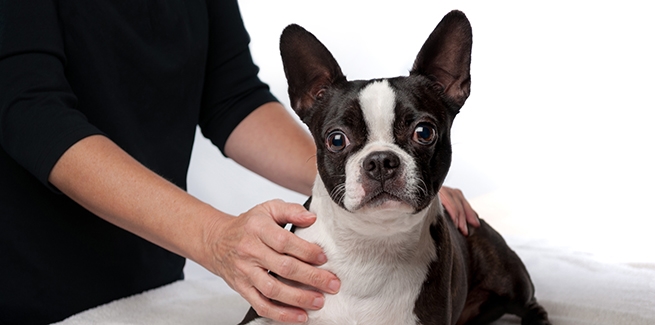Unhand that dog!

Which caregivers should be allowed to put their hands on a client’s pet? And under what circumstances?
For that matter, what constitutes a qualified caregiver?
A bill is coming to a vote before the California State Assembly’s Committee on Business and Professions next Tuesday that could change the answers to those questions, at least in California, and pose some thorny new ones with serious implications for the veterinary industry nationwide.
The bill, AB-3013, would amend California’s Physical Therapy Practice Act to:
· Expand the authority of physical therapists to perform physical therapy on both humans and animals
· Create an “advanced certificate in physical therapy” category in California’s Veterinary Medicine Practice Act
· Allow animal rehabilitation, which is defined as the practice of veterinary medicine, to be performed in a facility that does not include a veterinarian supervisor or require a veterinarian licensee manager to hold a premises permit
· Allow physical therapists to operate independent practices by referral only that would not include establishing a veterinarian-client-patient relationship on the practice site
Supporters of the bill, which include the California Association of Physical Animal Therapists, say that if passed, it would expand healthcare options for consumers by allowing veterinarians to refer clients to a licensed physical therapist certified in animal rehabilitation who would treat the pet outside of the veterinary hospital and without the veterinarian’s supervision.
Opponents of the bill, which include the California Veterinary Medical Association (CVMA) are critical of the referral model and believe that it’s in the best interest of the animal patient for a veterinarian to supervise care, whether by direct or indirect supervision.
They point out that indirect supervision is not the same as a referral.
According to the CVMA, indirect supervision means that the veterinarian bears the responsibility for that patient at all times, even if he or she is not present at the time the rehabilitation takes place. Under indirect supervision, the veterinarian determines if the patient requires a re-examination and changes or additions to treatment.
With a referral, the patient would be seen by a physical therapist over a period of visits and the physical therapist would determine whether there are health issues, if the animal is in pain, and whether they should send the animal back to the veterinarian. The CVMA, among others, believes these are diagnoses that only a veterinarian has the education, skills, and experience to make.
They say that this proposed model puts the animal at risk and puts undue liability on the referring veterinarian.
There are many successful veterinary practices with certified or registered veterinary technicians and physical therapists providing animal rehabilitation under the current supervision model. The CVMA believes this model is best for the patient and the client.
The CVMA points out that physical therapists are educated in human medicine. A certification in animal physical therapy does not give them the necessary education or experience to make independent decisions regarding the care and treatment of an animal patient.
The CVMA supports current regulations, approved by California’s Veterinary Medical Board (VMB) in 2017, that allow registered veterinary technicians, physical therapists, and veterinary assistants to provide animal physical rehabilitation under the supervision of a veterinarian and within the provisions of a premises permit issued by the VMB.
The bill comes to a vote next Tuesday, April 3.
Photo credit: © iStock/stphillips



